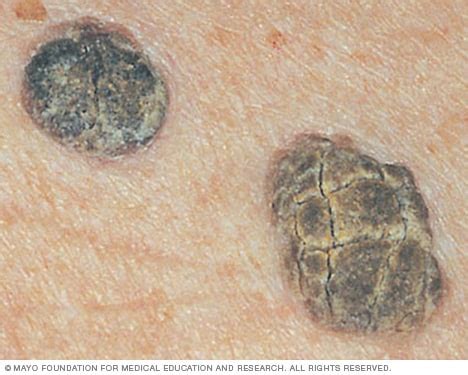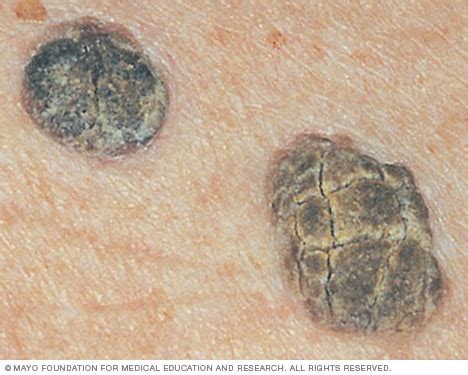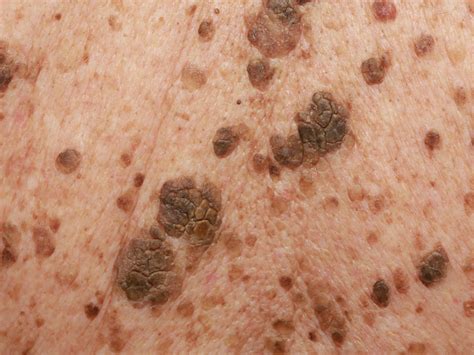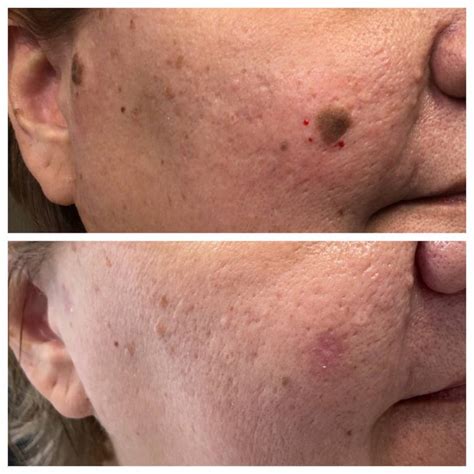Intro
Discover the visual signs of Seborrheic Keratoses through our comprehensive image guide. Explore the symptoms, causes, and treatment options for these benign growths, also known as seborrheic warts or senile warts. Learn to identify the characteristic appearance, colors, and textures of Seborrheic Keratoses and understand the differences between SK and other skin conditions.
Seborrheic keratoses are benign growths that can appear on the skin, often causing concern and confusion among those who develop them. Despite their harmless nature, seborrheic keratoses can be unsightly and may be mistaken for more serious skin conditions. In this article, we will delve into the world of seborrheic keratoses, exploring their symptoms, causes, and treatment options through a visual guide.

What are Seborrheic Keratoses?
Seborrheic keratoses are non-cancerous growths that can appear on the skin, typically in people over the age of 40. They are also known as seborrheic warts, senile warts, or basal cell papillomas. These growths are usually brown, black, or tan in color and can appear anywhere on the body, although they are most commonly found on the face, neck, and trunk.

Causes of Seborrheic Keratoses
The exact cause of seborrheic keratoses is still unknown, but there are several factors that are believed to contribute to their development. These include:
- Genetics: Seborrheic keratoses tend to run in families, suggesting that there may be a genetic component to their development.
- Aging: Seborrheic keratoses are more common in older adults, suggesting that they may be related to the natural aging process.
- Sun exposure: Prolonged exposure to the sun's ultraviolet (UV) rays may contribute to the development of seborrheic keratoses.

Symptoms of Seborrheic Keratoses
Seborrheic keratoses can appear in a variety of shapes, sizes, and colors. They may be:
- Flat or raised
- Smooth or rough
- Brown, black, or tan in color
- Round or oval in shape
- Small or large in size

Types of Seborrheic Keratoses
There are several types of seborrheic keratoses, including:
- Stucco keratoses: These are small, rough growths that can appear on the arms, legs, and trunk.
- Dermatosis papulosa nigra: These are small, dark growths that can appear on the face and neck.
- Seborrheic keratoses with a pigmented network: These are growths that have a network of pigmented lines or spots.

Treatment Options for Seborrheic Keratoses
While seborrheic keratoses are harmless, they can be unsightly and may be removed for cosmetic reasons. Treatment options include:
- Cryotherapy: This involves freezing the growth with liquid nitrogen.
- Shave excision: This involves removing the growth with a special tool.
- Laser therapy: This involves using a laser to remove the growth.
- Topical treatments: These include creams and ointments that can be applied to the growth to help remove it.

Prevention of Seborrheic Keratoses
While there is no surefire way to prevent seborrheic keratoses, there are several steps you can take to reduce your risk of developing them. These include:
- Protecting your skin from the sun: Use sunscreen and clothing to protect your skin from the sun's UV rays.
- Avoiding excessive sun exposure: Try to limit your time in the sun, especially during peak hours.
- Maintaining a healthy lifestyle: Eating a healthy diet and exercising regularly can help keep your skin healthy.
What is the difference between seborrheic keratoses and skin cancer?
+Seborrheic keratoses are benign growths that are not cancerous, while skin cancer is a malignant growth that can spread to other parts of the body. While seborrheic keratoses can be unsightly, they are not a sign of skin cancer.
Can seborrheic keratoses be prevented?
+While there is no surefire way to prevent seborrheic keratoses, protecting your skin from the sun and maintaining a healthy lifestyle can reduce your risk of developing them.
Are seborrheic keratoses contagious?
+No, seborrheic keratoses are not contagious and cannot be spread from person to person.
We hope this visual guide to seborrheic keratoses has been informative and helpful. If you have any further questions or concerns, please don't hesitate to reach out.
